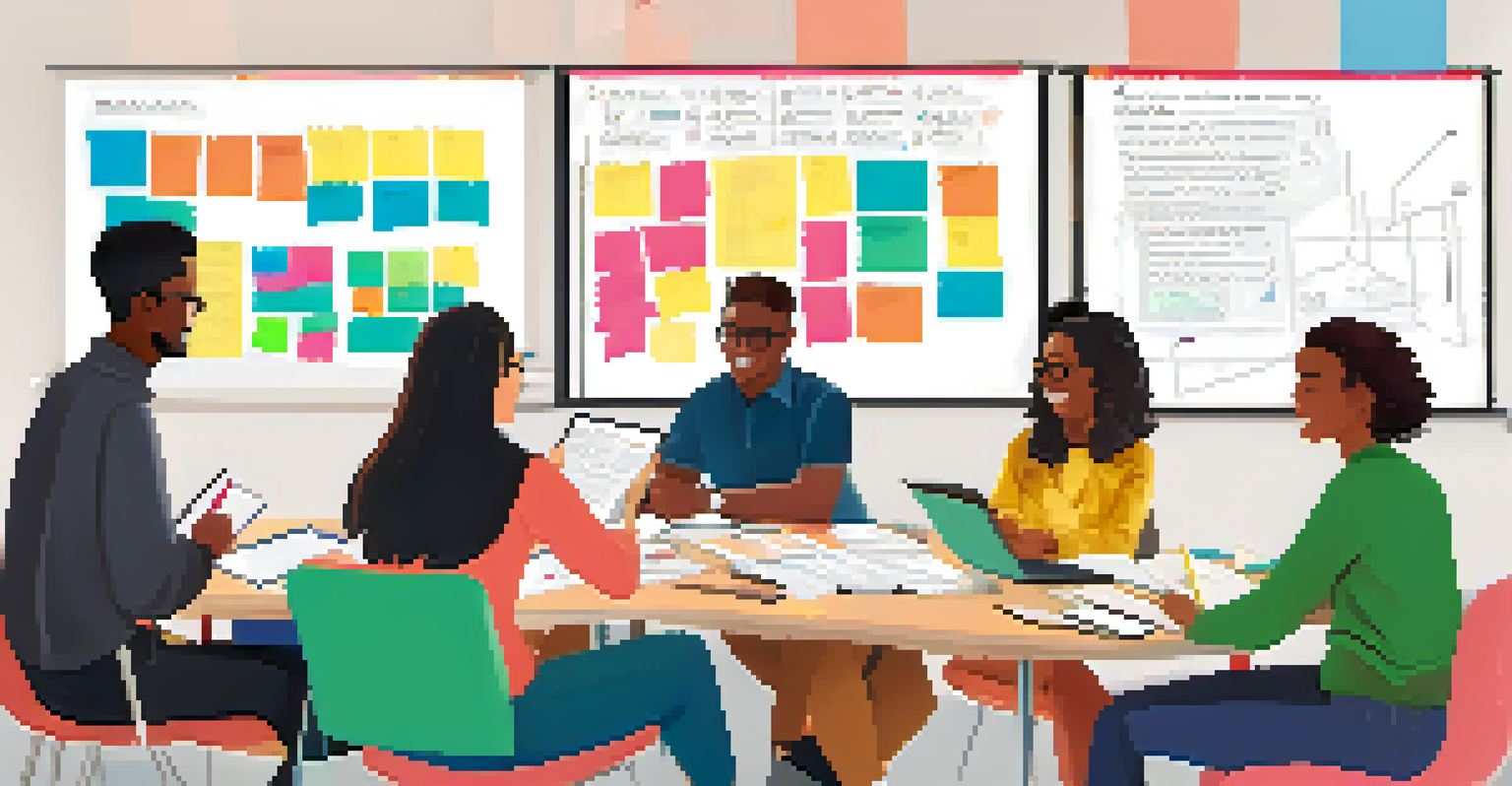Self-Directed Learning: Building Resilience and Adaptability

Understanding Self-Directed Learning and Its Importance
Self-directed learning is the process where individuals take the initiative in their own learning. It involves setting goals, identifying resources, and assessing progress without relying solely on formal education. This approach is crucial in today’s fast-paced world, where adaptability is key to success.
Tell me and I forget. Teach me and I remember. Involve me and I learn.
By taking charge of their learning journey, individuals can tailor their educational experiences to fit their unique needs and interests. This not only enhances engagement but also empowers learners to become more resilient in the face of challenges. Think of it like being the captain of your own ship, navigating through uncharted waters.
Moreover, self-directed learning encourages life-long learning habits, which are essential in an ever-evolving job market. As industries shift and new skills emerge, being proactive about learning helps individuals stay relevant and adaptable, much like a chameleon changing colors to blend into its environment.
Building Resilience Through Self-Directed Learning
Resilience is the ability to bounce back from setbacks, and self-directed learning plays a vital role in developing this trait. When learners take ownership of their education, they inevitably face challenges that require problem-solving and critical thinking. Each obstacle overcome builds confidence and strengthens their capacity to handle future difficulties.

For instance, a self-directed learner might struggle with a complex topic but choose to find alternative resources or methods to understand it better. This perseverance not only leads to mastery of the subject but also reinforces the idea that challenges are opportunities for growth. Just like a tree bending in the wind, resilient learners adapt and thrive through adversity.
Self-Directed Learning Empowers Growth
Taking initiative in one's education fosters resilience and adaptability in a fast-changing world.
Additionally, self-directed learning encourages a growth mindset, where learners view failures as stepping stones toward success. By embracing mistakes and learning from them, individuals cultivate resilience and a positive outlook, essential qualities for navigating life's uncertainties.
Fostering Adaptability in a Changing World
In an age where change is the only constant, adaptability is more important than ever. Self-directed learning equips individuals with the tools to adjust to new situations and environments effectively. By continuously seeking knowledge and skills, learners become more flexible and open to change.
Education is not the filling of a pail, but the lighting of a fire.
For example, a professional who engages in self-directed learning can pivot quickly when new technologies emerge in their field. They’re better prepared to embrace new tools and processes, allowing them to stay competitive and relevant. It’s akin to being a skilled dancer who can effortlessly switch styles in response to different music tempos.
Moreover, self-directed learners often develop a broader perspective, as they explore various subjects and viewpoints. This exposure enhances their ability to adapt not only in their careers but also in their personal lives, fostering a holistic adaptability that serves them well in all areas.
The Role of Goal Setting in Self-Directed Learning
Goal setting is a crucial component of self-directed learning, providing clarity and direction. When learners establish specific, measurable, achievable, relevant, and time-bound (SMART) goals, they create a roadmap for their educational journey. This structured approach helps maintain focus and motivation, especially during challenging times.
For instance, a student aiming to master a new language might set a goal to learn 50 new words each week. This clear target not only breaks the learning process into manageable chunks but also allows for regular assessment of progress. It’s like climbing a mountain—having milestones along the way makes the journey less daunting and more rewarding.
Goal Setting Guides the Learning Journey
Establishing SMART goals provides clarity and motivation, helping learners navigate their self-directed paths.
Additionally, effective goal setting fosters accountability, as learners can track their achievements and adjust their strategies as needed. This practice not only builds resilience but also reinforces the importance of adaptability, as goals may shift based on new insights and experiences.
Embracing Resources for Self-Directed Learning
A key advantage of self-directed learning is the abundance of resources available to learners today. From online courses and tutorials to podcasts and forums, individuals have a wealth of information at their fingertips. Embracing diverse resources allows learners to explore topics from various angles and deepen their understanding.
For example, someone interested in photography can dive into online workshops, join local clubs, or follow expert photographers on social media. This variety not only enriches their learning experience but also provides opportunities to connect with others who share similar passions. Think of it as being a chef, experimenting with different ingredients to create a unique dish.
Furthermore, leveraging multiple resources encourages adaptability, as learners must navigate and evaluate different types of information. This skill is invaluable in today's information-saturated world, where discerning credible sources is essential for informed decision-making.
Creating a Supportive Learning Environment
A nurturing environment is vital for effective self-directed learning. Whether it’s a quiet corner at home or a local library, having a dedicated space enhances focus and productivity. Additionally, surrounding oneself with supportive peers or mentors can significantly boost motivation and resilience.
For instance, joining a study group or an online community can provide encouragement, resources, and diverse perspectives. This collaborative approach mirrors the idea of a garden, where different plants thrive together and support each other's growth. The shared experiences can also foster adaptability as learners exchange strategies and insights.
Reflection Enhances Learning Insights
Regular reflection on one's learning experiences reinforces knowledge and promotes continuous improvement.
Moreover, a positive learning environment encourages risk-taking, allowing individuals to experiment and learn without the fear of failure. This supportive atmosphere is crucial for developing resilience, as it helps learners embrace challenges and view them as opportunities for growth.
Reflecting on the Learning Journey
Reflection is an essential aspect of self-directed learning that often gets overlooked. Taking time to review what has been learned, the challenges faced, and the strategies employed allows learners to gain valuable insights. This practice not only reinforces knowledge but also aids in recognizing areas for improvement.
For instance, after completing a project, a learner might reflect on what worked well and what didn’t, using this information to inform future endeavors. This self-assessment is akin to a coach reviewing game footage to strategize for the next match, ensuring continuous improvement and adaptability.

Additionally, regular reflection fosters resilience by helping individuals recognize their growth over time. Celebrating achievements, no matter how small, boosts confidence and encourages a positive mindset, making it easier to tackle future challenges head-on.